| DAY 01 ARRIVE DELHI |
Arrive at New Delhi’s Indira Gandhi International airport.
Delhi – the capital of India – The city consists of two parts – Old & New Delhi. Old Delhi was the capital of Muslim India between 17th and 19th century and has many mosques, monuments and forts. This is gateway for all India travelling & all India trip . New Delhi, the imperial city was created by the British as the capital of India. In 1911, Edwin Lutyens, the most renowned English architect of the day, was chosen to design New Delhi which flaunts a surprising number of impressive monuments related to its conquests by the Mughals, Turks, Persians and ultimately the British.
Meet & Assist: Our representative meets you at the arrival hall of airport, holding a signage and escort you to your hotel in air-conditioned vehicle.
Check-in at your hotel in Delhi for 2 nights.
Overnight: Hotel
| DAY 02 DELHI |
Morning proceed for combined tour of Old & New Delhi .Begin with an exploration of Old Delhi – visit the Jama Masjid, the royal mosque built by the Mughal Emperor, Shah Jahan in 1656. It is one of the largest and most beautiful mosques in the world and is constructed in red sandstone and white marble. The main prayer hall has a seating capacity of more than 20,000 worshippers. In the old city of Delhi, walk through the by-lanes of the spice market, the wedding street and the jeweler’s lane to savor the 350 years old culture up-close. There will be great photo opportunities here.
Drive past Red fort, built in red sand stone by Shah Jahan in 1648, this magnificent monument is laid out along the river Yamuna as an irregular octagon. Drive through the majestic boulevards of New Delhi designed by the Edwin Lutyens in 1920. Lutyens’ Delhi includes the grand government buildings and parliament house.
The Rashtrapati Bhavan (Presidential Palace) is where the Viceroy once lived and now is the official residence of the President of India. It is an imposing structure with 340 rooms, constructed high up on Raisina Hill. View India Gate, a war memorial arch built in honour of 90,000 Indian soldiers who lost their lives in World War.
Continue to Humayun’s Tomb, the first great example of Mughal architecture in India, it developed to become the hallmark of the Mughal Dynasty. Culminate your tour at Qutab Minar, a soaring tower of victory, 72.5meter high with five distinct stories. The construction of this minaret commenced in 1193 and was completed in 1368. Built on the foundation of a Hindu emple, many elements of the construction reflect their Hindu and Jain origins. Within the complex, there are myriad monuments that combine both Islamic calligraphy and Hindu motifs.
Return to hotel after the above visits.
Overnight: Hotel
| DAY 03 DELHI – AGRA |
After breakfast, drive to Agra through covering a distance of 200kms in approx. 3-4 hours.
Agra: Considered as best tourism destination in the world has Two great Mughal monarchs, Akbar and Shah Jahan, transformed the little village of Agra into a befitting second capital of the Mughal Empire. Today, a visitor to Agra is caught up in a world of contrasting edifices of red sandstone and white marble, narrow lanes and quaint buggies, and that irresistible charm that this favorite city of the Mughals still retains.
Arrive at Agra and check-in at your hotel for an overnight.
Afternoon enjoy city tour of Agra- visit Taj Mahal & Agra Fort.
Note: Taj Mahal remains closed on every Friday.
Taj Mahal – The 17th century Taj Mahal is often called a poem in stone. If so, the mausoleum is a love poem – created by Mughal Emperor Shah Jahan for his favorite wife Mumtaz Mahal. It took 22 years to be completed and was designed and planned by a Persian architect Ustad Isa. Apart from its stunning design balance and perfect symmetry, the Taj is also noted for its elegant domes, intricately carved screens and some of the best inlay work ever seen. (Taj Mahal remains closed on Fridays
Agra Fort – situated two kilometres towards west of the Taj Mahal on the banks of the river Yamuna. It was built by the third Mughal Emperor, Akbar, and added to by his son Jahangir and grandson Shahjahan. Agra Fort is an imposing structure with walls of red sandstone, almost two miles long and contains palaces, audience halls and mosques built by all the three emperors. The fort presents a good sampling of Islamic and Hindu architectural styles.
Evening visit Sheroes, Close to the Taj Mahal, is a small cafe tucked between trinket shops, five women–all maimed in acid attacks–are waiting tables downstairs or cooking curries in the kitchen upstairs. Their work at Sheroes Hangout is designed to give them the confidence to show their faces in public after being disfigured. And it goes the other way too. If customers haven’t met someone with acid scars before, they will have by the time they leave the cafe. Pictures of the women’s faces adorn the walls and their images are writ large in graffiti on the exterior.
Overnight: Hotel
| DAY 04 AGRA – RANTHAMBORE |
Breakfast at hotel.
Later drive to Ranthambore covering a distance of 325 kms in approx. 7 hours.
En-route visit Fatehpur Sikri.
Fatehpur Sikri, the deserted red sandstone city was built by Emperor Akbar as his capital and Palace in the late 16th century. It is a veritable fairy tale city and its ruins are in pristine condition. It is not hard to imagine what the court life must have been like in the former days of its grandeur. Also visit the Bulund Darwaza, which is the largest gateway in the world.
After visit continue your drive to Ranthambore.
Ranthmabore Tiger Reserve (near Sawai Madhopur) is known for its spectacular scenery. The sanctuary is a system of lakes and rivers – hemmed by steep, high crags and the remains of a thousand year old fortress and temple. The area has a dramatic terrain of rocky, steeply–scarped hills, valleys and open land, enhanced by structures that testify to a heroic past; old guard posts, pavilions and ruins of palaces. There is a good chance of seeing one of the few, highly endangered Bengal Tigers still remaining in the park. The deep gorges of Ranthmabore serve as hide outs for leopards, tigers and sloth bear. The park also provides a congenial habitat for the ‘chital’ or spotted deer and sambar, the largest of the Asiatic deer. Woodland, ground and water birds also bound in the area, including the uncommon red jungle fowl and eagle.
Overnight: Hotel
| DAY 05 IN RANTHAMBORE |
Morning and afternoon Jungle safari in the park accompanied by a naturalist.
Ranthmabore has for over a century been one of the most sought after hunting grounds for tiger on the Indian subcontinent. In more recent times and especially in the last decade this reserve has become internationally known as an exciting hub for research and conservation directed towards protecting the majestic Royal Bengal tiger and its total environment. Some individual tigers in the reserve that developed unique styles of hunting became the subjects of films and books that have won worldwide acclaim. The 10th century fort that overlooks the reserve provides a sense of grandeur and history that puts its diversity of wildlife (much of which continue to use the ancient ramparts!) in unique perspective.
Overnight at Hotel.
| DAY 06 RANTHAMBORE – JAIPIUR |
Morning drive to Jaipur.
Jaipur: The city was first intended to be called ‘Sawai Jaipur’, named after the boy Prince who commissioned it – Maharaja Jai Singh II – a warrior, astronomer and politician who reigned over the Mughals from 1699 to 1743. Today’s Jaipur is pink, visually described as the city shaded with the autumn colors of sunset. Although originally the walls were render set and pigmented the color of red sandstone, Jaipur’s universal coat of pink only came in 1876 to coincide with the visit of the Prince of Wales (King Edward VII). Almost the entire city was given a coat of pink paint, thus giving it the name the ‘Pink City’.
Arrive in Jaipur and check-in at your hotel for 2 nights.
Rest of the day at leisure
Overnight: Hotel
| DAY 07 IN JAIPUR |
Morning enjoy an excursion to the magnificent Amber Fort
Tour the chambers and hallways of the palace, famous for the excellence of its design and decoration. Within the complex is Ganesh Pol, an imposing gateway painted with the images of the elephant-headed god, Ganesh. The merging of Rajput and Mughal architectural styles is captured in the Sukh Niwas and Jas Mandir apartments, and the Charbagh garden with its perfectly proportioned landscaping. Pierced screen windows offer views from different vantage points & shimmering mirrors encrust walls of Sheesh Mahal.
Later enjoy an orientation tour of Jaipur.
Visit the Jantar Mantar Observatory. Built in the 1700s but still appears to be futuristic. It houses unique instruments for measuring the harmony of the heavens! Continue your visit to City Palace to witness the Maharaja’s private collection of textiles and armory. Culminate the tour with a photo stop at Hawa Mahal also known as the “Palace of the Winds.” This beautiful façade is probably the most-photographed in Jaipur, with its ornately carved windows designed so the ladies of the palace could look out onto the streets unobserved.
Visit old market area on cycle rickshaw. Cruise around the old city with its colourful shops, latticed windows houses and rose pink colour streets. Witness the architectural marvels, beautifully decorated shops, ethnically dressed men and women
Overnight: Hotel
| DAY 08 JAIPUR – DELHI & LEAVE DELHI |
Morning free.
Afternoon transfer to Delhi international airport to connect flight for onward destination

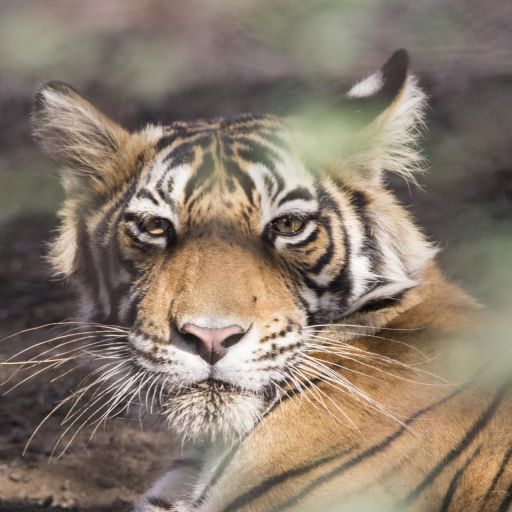
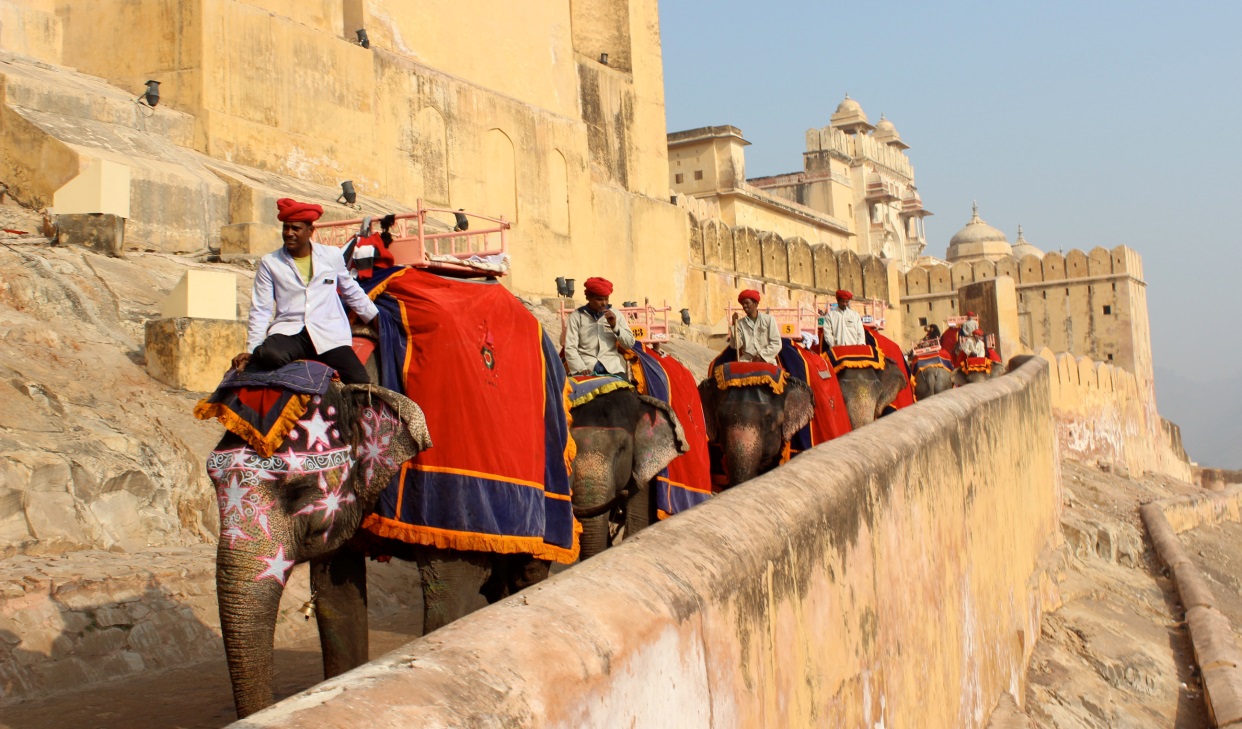
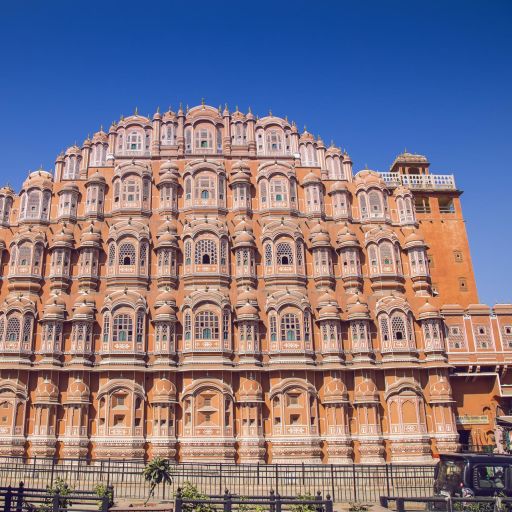
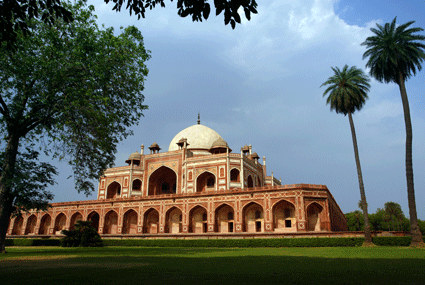
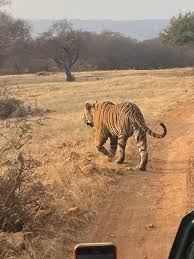
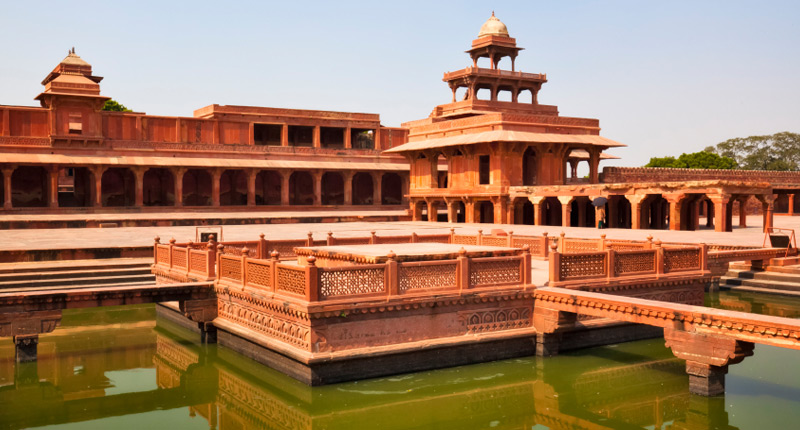
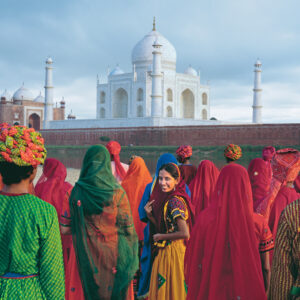
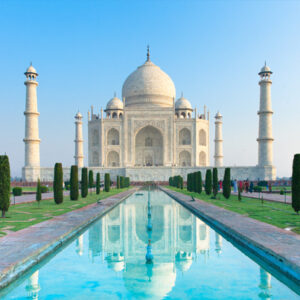

Reviews
There are no reviews yet.